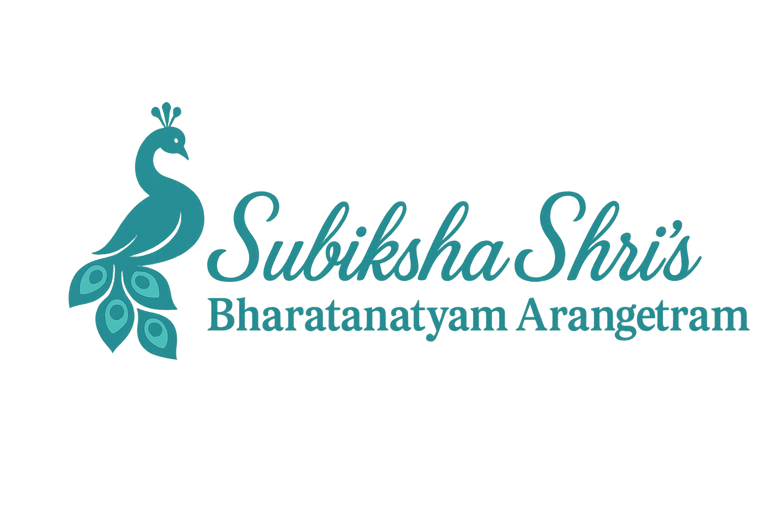📕 Program Brochure (PDF)
Program Overview
Schedule
🕞 3:30 PM – Seating Opens
🕓 4:00 PM – Event Begins
🕠 5:30 PM – Intermission
🕕 6:00 PM – Event Resumes
🕖 7:00 PM – Event Concludes
🍽 Dinner to follow
📖 Program Order
1. Pancha Moorthy Anjali
Ragam: Ragamalika
Talam: Misra Jambai
Composer: Thanjai Arunachalam Pillai
Choreography: Smt. Rani Sunil
Pancha Moorthy Anjali is a traditional invocatory composition praising the five deities (also known as the Panchamoorthies): Lord Ganesha, Lord Muruga, Lord Shiva, Goddess Sivakami Sundari, and Lord Chandikeswarar.
2. Malayamarutham Jathiswaram
Ragam: Malayamarutham
Talam: Adi
Composer: Karaikudi Sri R. Krishnamoorthy
Choreography: Smt. Nritya Choodamani Krishnaveni Lakshmanan
Jathiswaram is a nritta (pure dance) presentation in which intricate adavu sequences are performed to a set of repetitive musical notes, also known as swaras. Jathiswarams include a single stand-alone jathi and several korvais set to a Pallavi, Anupallavi, and Charanas, demonstrating the dancer’s understanding of technical skill.
3. Muruga Shabdam – Thandai Muzhanga
Ragam: Ragamalika
Talam: Mishra Chapu
Composer: Shemmangudi Koi Shanmugam
Choreography: Smt. Rani Sunil
A sabdam is the first piece in a margam that introduces the audience and dancer to abhinaya, or expression. Sabdams are usually in praise of a deity or a patron king, enabling the dancer to experiment and perfect different modes of expression. This sabdam outlines the description of Lord Muruga’s appearance, from his baby crawls and valorous strides to his beautiful, sharp eyebrows and his gem-like smile.
4. Varnam – Lord Muruga
Ragam: Latangi
Talam: Adi
Composer: Andavan Pichai
Choreography: Smt. Rani Sunil
The varnam is the most complex piece of the repertoire, showcasing the dancer’s skill through both nritta and abhinaya. This varnam praises the valor and divine grace of Lord Muruga, expressing the devotee’s deep love and reverence for the deity through intricate movements, rhythmic patterns, and expressive storytelling.
~ Intermission ~
5. Shanmuga Keerthanam
Ragam: Karna Ranjani
Talam: Mishra Chapu
Composer: Hari Prasad
Choreography: Smt. Rani Sunil
This keerthanam is in praise of Lord Muruga, the one with the divine spear gifted to him by his mother, Goddess Parvati, the one who defeated demon Soorpadman, and the one who rides on his beautiful peacock, blessing all who seek him.
6. Kuravanji
Ragam: Arabhi
Talam: Mishra Chapu
Composer: Venpa Puli
Choreography: Dr. Pannuri Suresh
This piece is an excerpt from the Kumara Lingesha Kuravanji dance drama, describing the stunning appearance of a Kuravanji. Kuravanjis are storytellers, talented in palm-reading, who hail from the mountain regions of Tamil Nadu, deeply devoted to and blessed by Lord Muruga.
7. Thillana
Ragam: Shanmughapriya
Talam: Aadi
Composer: Dhananjayans
Choreography: Bharatha Kalanjali
The Thillana is a lively and rhythmic dance form generally performed at the end of a Bharatanatyam concert. This dance involves dynamic movements of the legs, hips, and arms, showcasing the dancer’s agility and precision. Additionally, expressive eye movements and intricate hand gestures are used to convey emotions, adding depth to the performance.
8. Mangalam
The dancer concludes the recital with a Mangalam, signifying an auspicious ending. She performs a Namaskaram, expressing reverence and gratitude to God, her Guru, and the audience. This gesture symbolizes the culmination of the Arangetram and honors all those involved in her journey.
📺 Live Streaming
✨ We are delighted to share Subiksha Shri’s Bharatanatyam Arangetram with family and friends around the world.
👉 Watch Live Here: https://www.youtube.com/live/R5usCNRj8cY
© 2025 Subiksha Shri’s Arangetram
